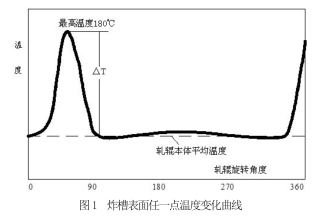3) When the groove is rolled to a certain time, the micro-crack gradually expands, extends and deepens, and finally causes the roller ring to burst;
4) The assembly of the roller ring is not in place, causing the cone sleeve of the roller ring to lock with the roller shaft, the cone sleeve to damage, and the roller ring to blow the roller;
5) Roller ring is a brittle material, large weight, very easy to damage.
3、Technology improvement and process control
3.1 Select the roller ring brand according to the geographical location
According to the content, type and chemical composition of the adhesive phase, the grain size of WC, the porosity of the material, the content of carbon, the microstructure and grain morphology of the raw materials and the preparation process, different grades of roller rings can be designed. Different grades of cemented carbide roller rings have different hardness and strength, which are suitable for different frames, and should be correctly selected.
The hardness and wear resistance of the roller ring are derived from tungsten carbide, while the toughness and strength depend on the bonding phase metal. High binder phase content, good toughness and strength, good impact and hot crack resistance, suitable for the front frame with large rolling force and poor rolling precision requirements; Tungsten carbide content is high, good hardness and wear resistance, toughness and strength is relatively poor, suitable for rolling force is small, high precision rolling mill behind the frame, can ensure the dimensional accuracy of the finished product.
According to the geographical location of Yangchun, Guangdong Province, the selection of YGR series carbide roller ring, the series of grades of alloy are added Ni, Cr elements, can significantly change the oxidation resistance of cemented carbide in 700 ~ 1000℃ when exposed to the air, corrosion resistance in acidic solution is also improved, but also improve the high temperature performance of cemented carbide. The alloy has high thermal crack resistance and corrosion resistance. Suitable for PH≤7.2 slightly acidic environment and high rolling speed.
3.2 Strengthen the supervision of cooling water
Cooling water is the life of the roller ring, according to the actual situation of the site, the following requirements for cooling water supervision:
1) Water quantity and pressure: The groove width is less than 0.5 "and the water quantity is controlled at more than 18m³/ shelf · hour, the groove width is 0.5" ~ 1.0 "and the water quantity is controlled at more than 20.5m³/ shelf · hour, the groove width is 1.0" ~ 1.5 "and the water quantity is controlled at more than 22.7m³ / shelf · hour, and the groove width is 1.5" ~ 2.0 "and the water quantity is controlled at more than 25m³ / shelf · hour. Strengthen the spot check of the water valve to ensure that the water pressure at the cooling water pipe nozzle is required to be 3 to 7bar.
2) The content of solid particles in the water, the solid particles in the cooling water in the rolling as abrasive, the adhesive phase in the roller ring (drill or nickel drill) has an abrasive effect, due to the high rolling speed and large rolling pressure, this effect is serious. It will make the microcrack of the groove expand and prolong faster. Therefore, the fluid is required to check the water quality every month to ensure the quality of cooling water.
3) Strengthen spot inspection, stop rolling and repair in the workshop, there must be a special post personnel to check the water pipe, and ensure that the cooling water pipe is on the rolling groove.
3.3 Determine the reasonable amount of rolled steel
Generally speaking, when the micro-crack of the rolling groove reaches 0.2~0.4mm, the line grinding should be carried out, this crack depth is considered to be safer, and the rolling amount is more appropriate at this time, usually the following range:
1, 2 1,800 ~ 2500 tons
Three or four 1,800-2,500 tons
5, 6 1500 ~ 2000 tons
7, 8 1500 ~ 2000 tons
9, 10 600 ~ 1000 tons

